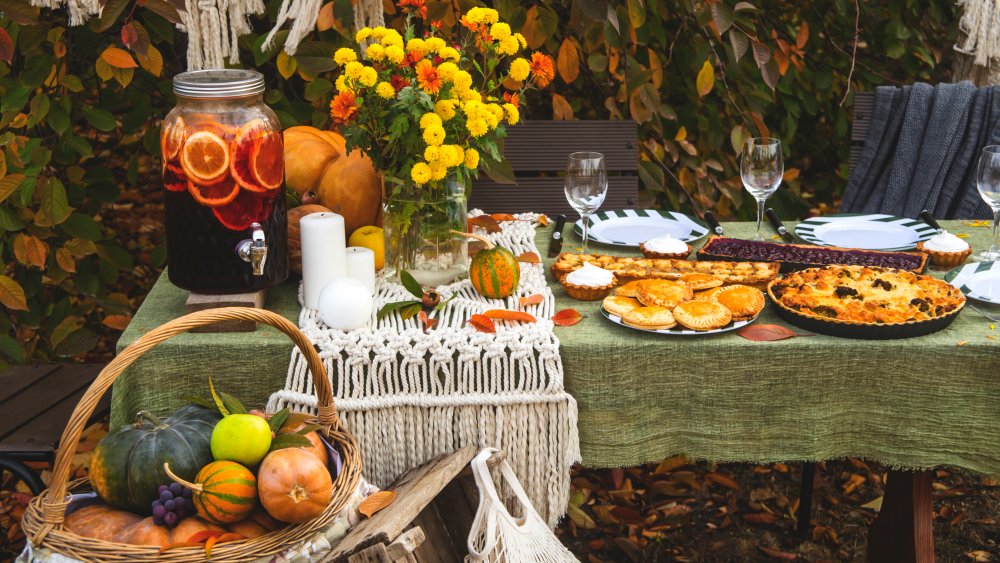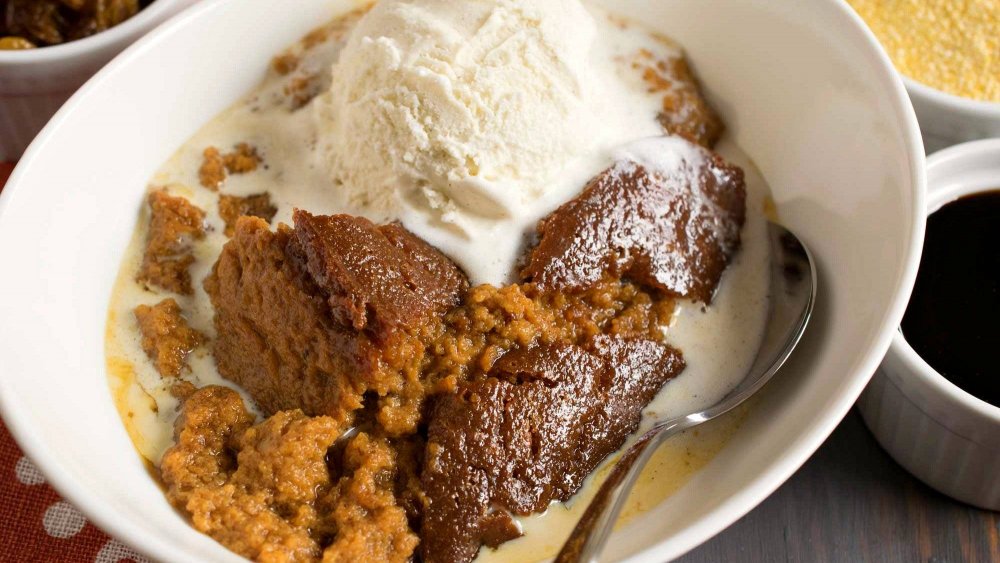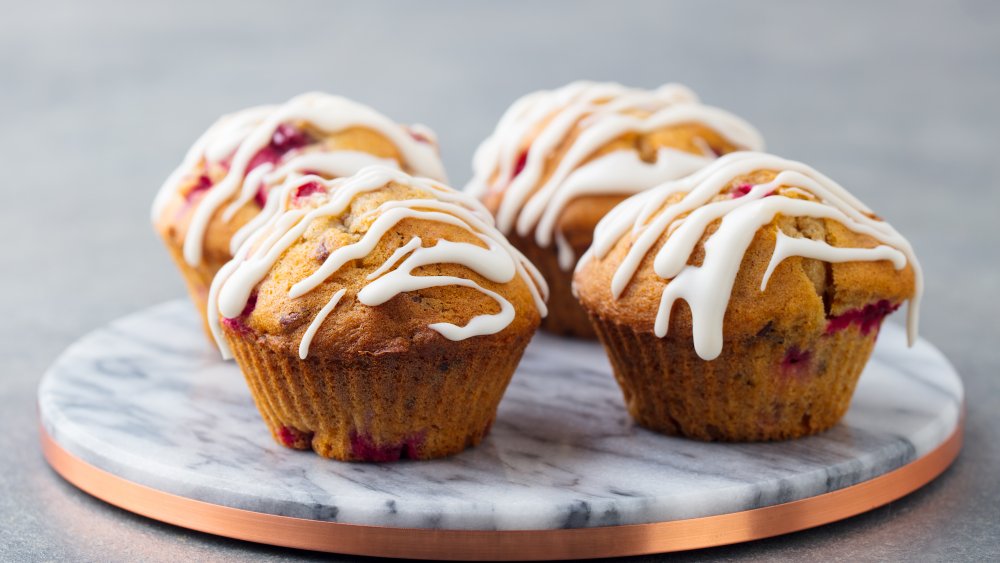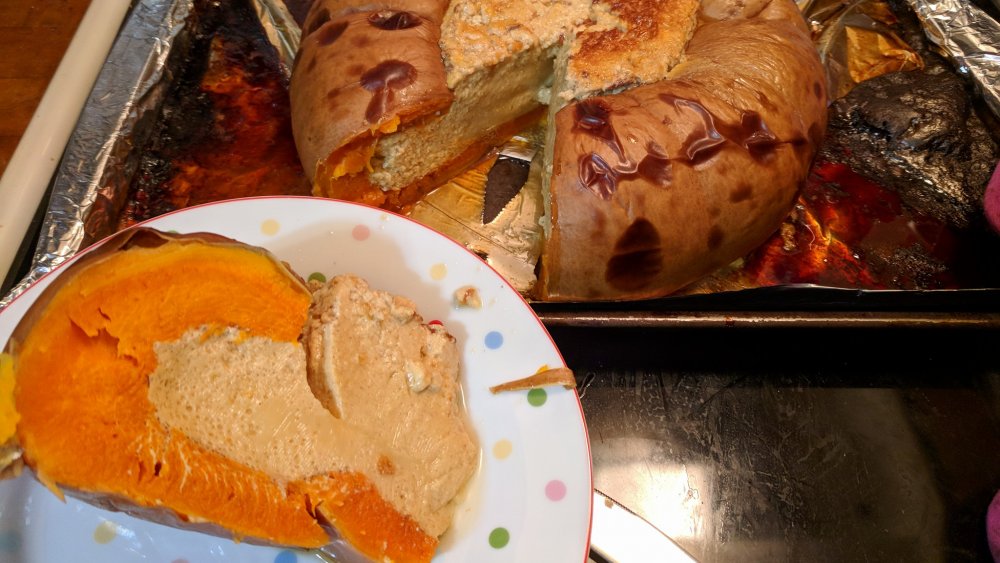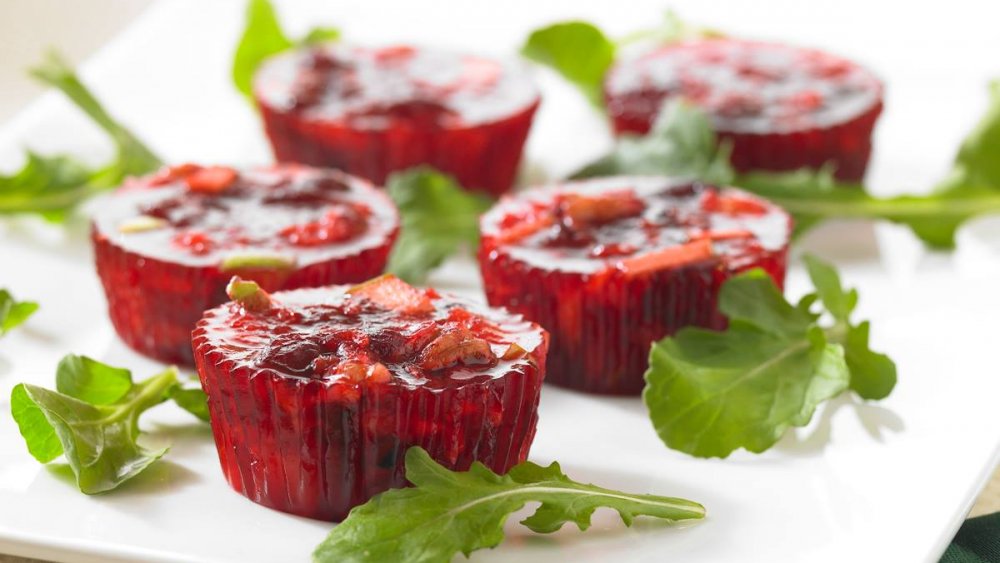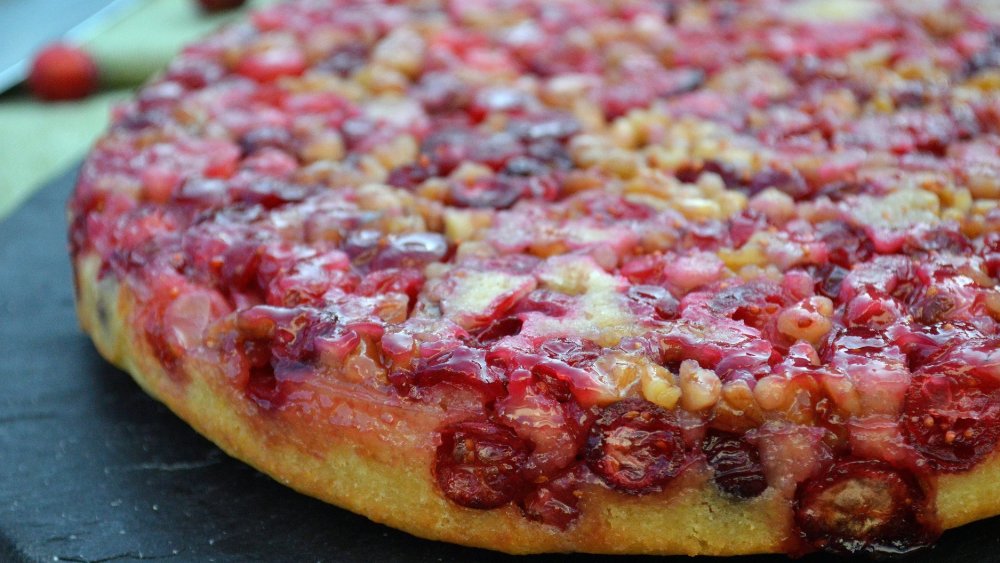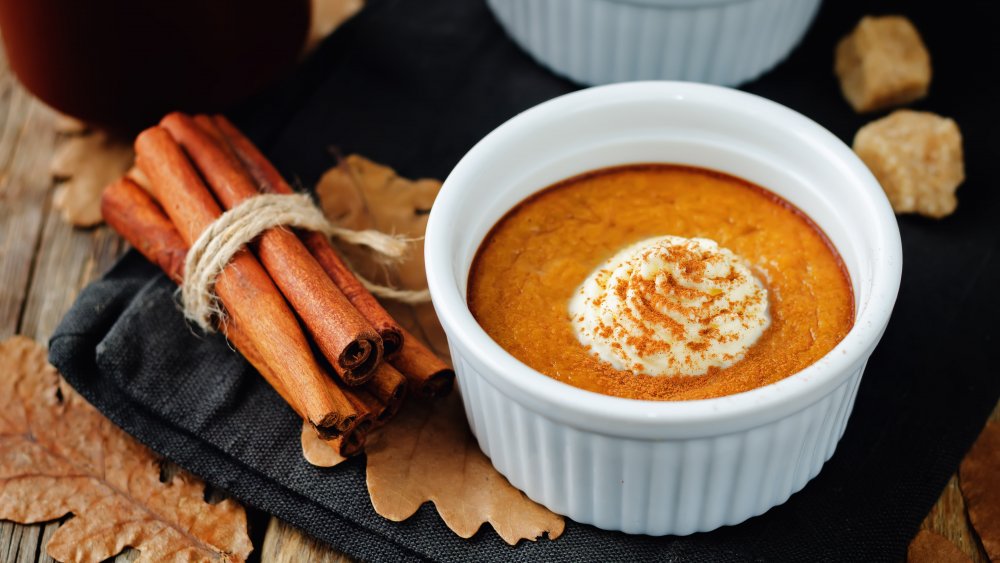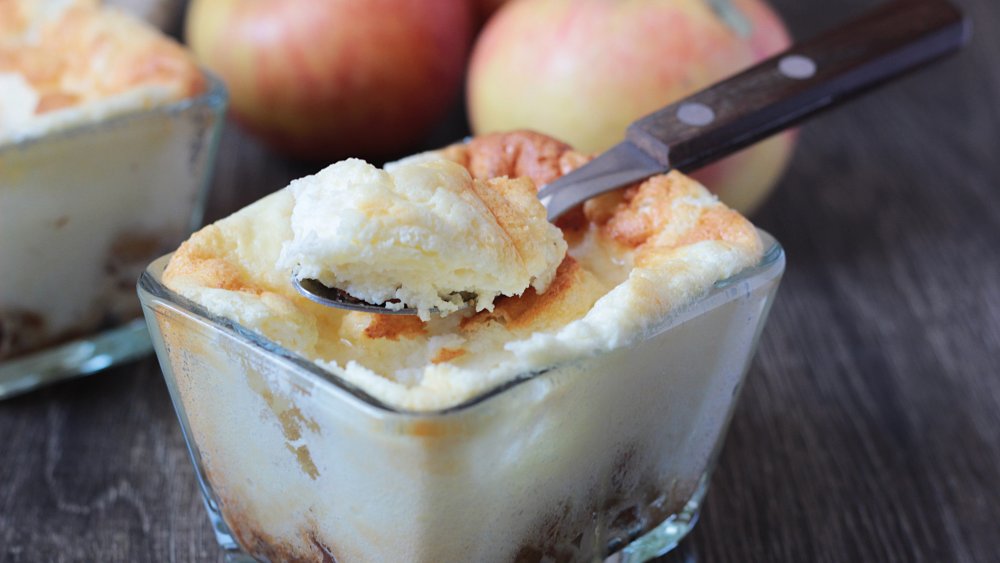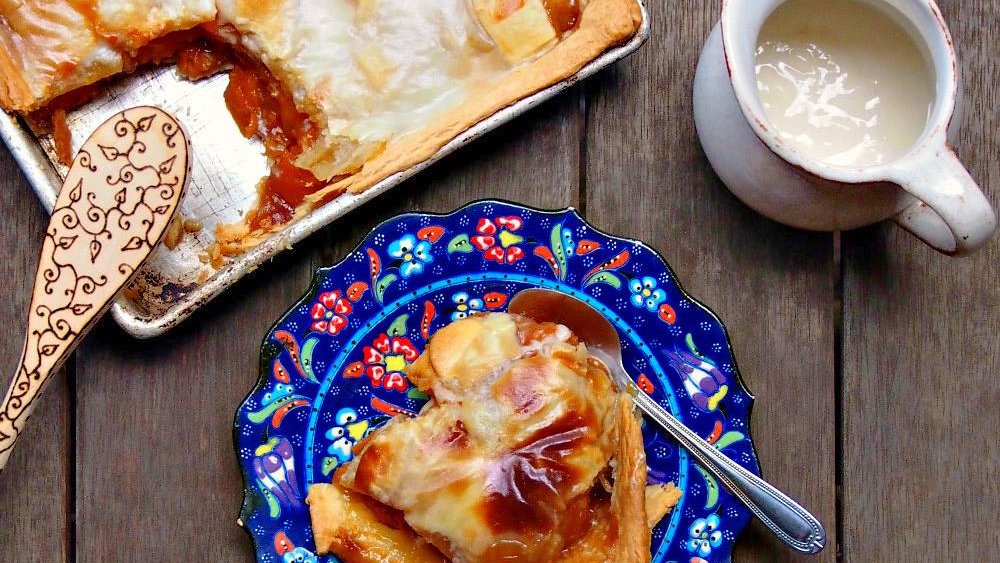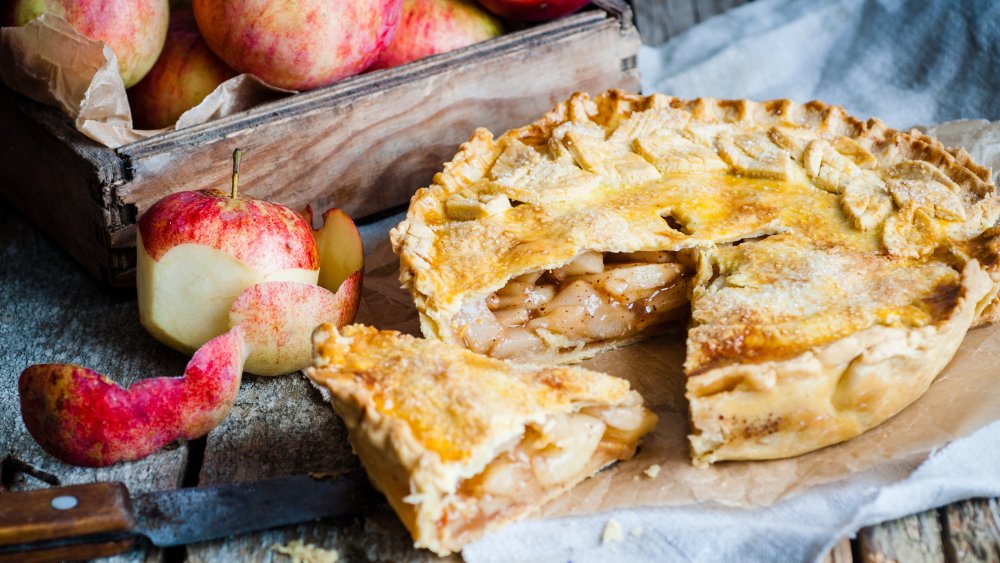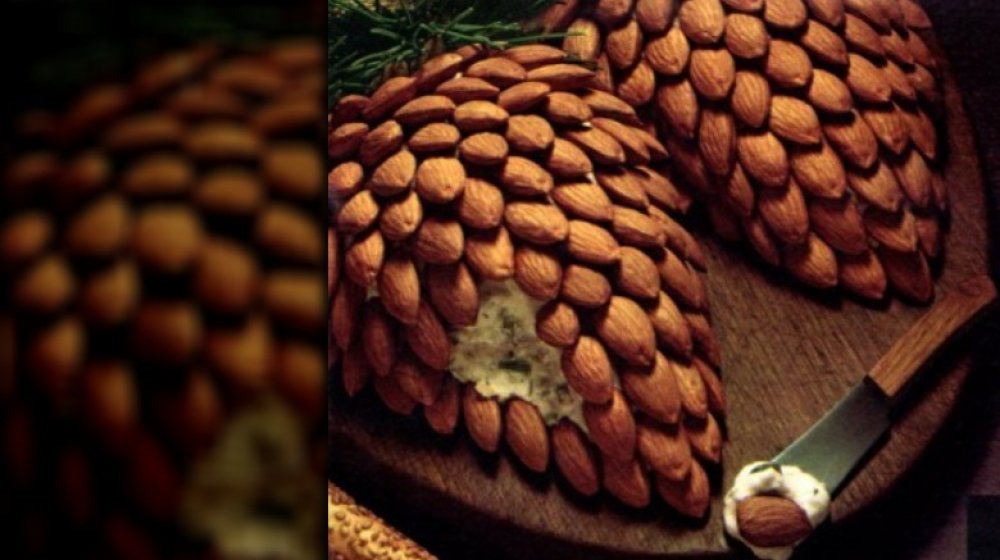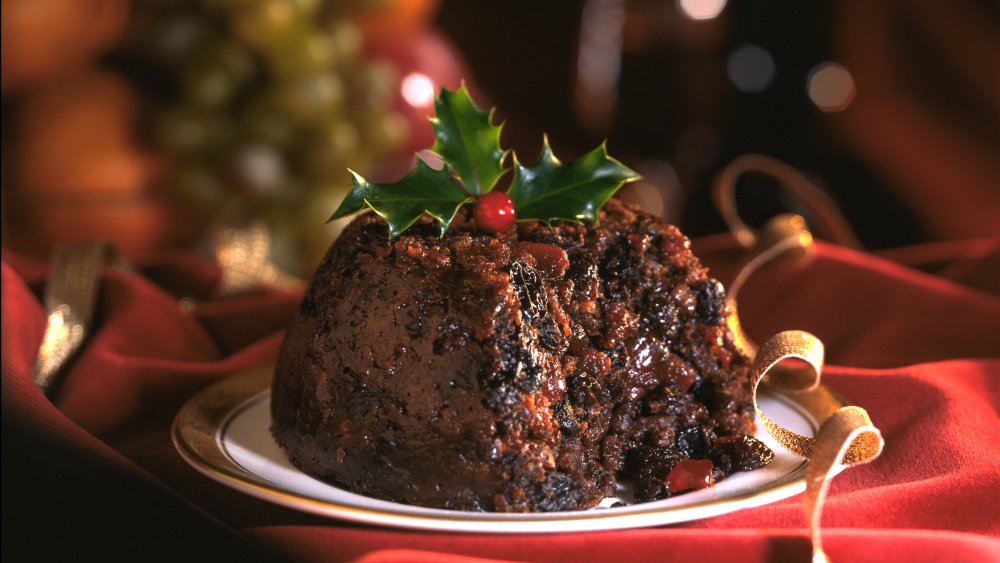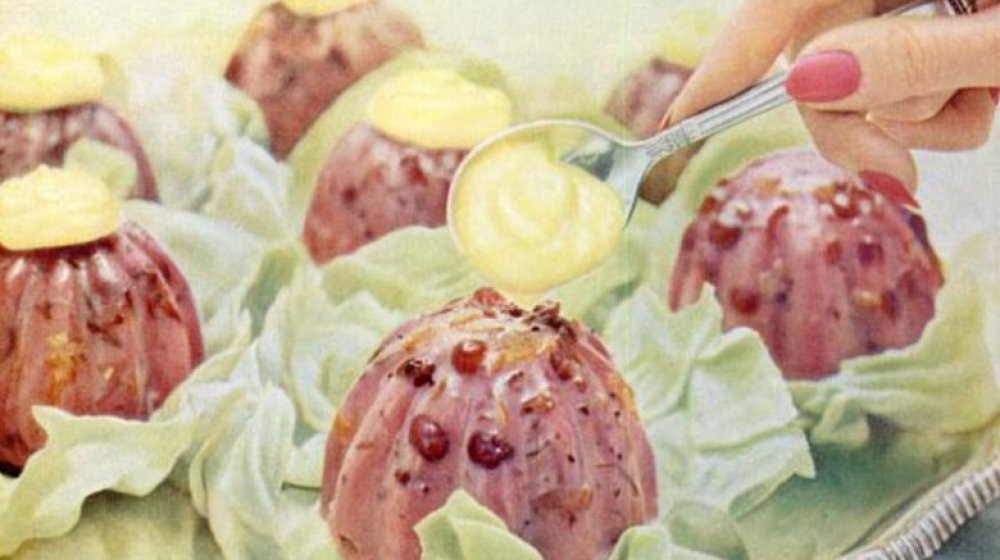Old-School Thanksgiving Desserts You Should Bring Back To Your Table
We all know that Thanksgiving is a time to take stock of all that we have to be grateful for — and to repeat a super questionable version of history — but anyone who's tasked with cooking a full meal or bringing something to dinner knows how tough it can be. It's a holiday steeped in tradition, and here's where things get tricky: You'll want old favorites on the table, but you also want them to be good, and a little variety doesn't hurt, either.
So, let's say you're looking for a dessert to bring or something super creative to add to the menu. What checks all the boxes of traditional, tasty, different, yet same? Complicated, right? It doesn't have to be!
It turns out there's a bunch of vintage desserts that were, at one time, seen on Thanksgiving tables across the country or throughout a certain region. For whatever reason, they fell off the mainstream radar. They still might provide the answer to all your dessert dilemmas, though — so consider some of these tasty vintage treats this Thanksgiving!
Indian pudding
So, the elephant in the room: The name of this classic New England Thanksgiving dessert isn't that politically correct these days. But we're talking about a dessert from a different time, so ... maybe rename it? Call it something like Molasses Delight, or how about a Rum-and-Vodka? The main ingredients are the base ingredients of rum and vodka — molasses and corn — so that works, right?
It's certainly better than the other names What's Cooking America says it's been known by. Sure, it's also been called Indian Mush, but just don't tell the people at your dinner table. In its earliest incarnation — which dates back to around 1796 — this dessert was little more than a cornmeal mush with a dash of molasses added for sweetness. It has its roots in an olde-timey English dessert called hasty pudding that dates back to 1599, and if that doesn't sound appetizing in the least, don't worry, it gets better.
Later recipes added things like raisins and a slew of spices, and in the places that it's still served — mostly in New England — it's often accompanied by vanilla ice cream. Since the pudding is served hot and the ice cream is obviously cold, some have taken to calling it Heaven-and-Hell. Whatever you call it, it tastes divine.
Narragansett strawberry cornbread
Massachusetts's Plimoth Plantation is a living museum that focuses on life in the 17th century, and they've gone to the trouble of recreating some authentic dishes that would have been found on local tables hundreds of years ago. According to Boston Magazine, they hold their own Thanksgiving celebrations with these authentic recipes, and one that sounds absolutely delicious is the Narragansett strawberry cornbread.
Strawberries were a well-known and delicious treat: They even got a shout-out in the journals of Massachusetts Bay Colony leader John Winthrop. But it was the Narragansett tribe who first mixed them into their cornbread, and it's incredible.
There's a lot of cornbread recipes out there, and it really is as simple as mixing in some strawberries — or, as A Taste of History suggests — some dried berries. Just remember that if you're going authentic, it should be a recipe that doesn't use dairy or eggs. Authentic or modern, this can be the perfect dessert for anyone who doesn't want to follow a heavy Thanksgiving meal with a too-sweet dessert.
Pilgrim pumpkin/squash pie
Pumpkin pie is hardly something that needs to make a comeback on Thanksgiving tables: It's everywhere, whether you like it or not. But we're not talking about our modern pumpkin pie, we're talking about the original — which looked pretty different.
For starters, What's Cooking America says that there was no crust. We know that for a simple reason: There were no ovens around that would have been capable of baking a pie with a crust. They also say that at first, settlers really weren't impressed with the idea of eating pumpkin at all and scorned the idea ... until scurvy set in, and native people showed them how to do something tasty with it.
In this case, that was — likely — simply just cutting the top off of a pumpkin (or other type of squash), taking out the squishy bits on the inside, and baking it over an open fire. It would have taken a long time, but according to The Huffington Post, it ended up baking down into a version of pie. The pumpkin would have been sliced, and the inside would have been hot, tender, sweet, and delicious. Plus, it looks cool! It's easy to modernize, too. Swap an open fire for your oven, make sure you pick up a pie pumpkin and not a regular old carving pumpkin, and you could even fill it with custard.
Jell-O salad
The Guardian pondered whether the Jell-O salad was an "American abomination or Thanksgiving treat?" and, well, that's a fair question. We've all seen the cringe-worthy pictures from 1970s-era cookbooks that regularly make the rounds online: They're things like hot dogs, tuna fish, or other tinned meats in lime Jell-O with who knows what thrown in for good measure. Whipped cream? Jalapenos? Spam? Why not!
Serious Eats says that gelatin-based desserts were once reserved for the rich and famous — i.e., the people who could afford to hire people to make gelatin and the desserts. But when Jell-O came on the scene at the turn of the twentieth century, things changed. And people? Well, they got a little carried away. Jell-O salads, with their jiggly exteriors and surprise fillings, were once called "America's most famous dessert," and we're going to argue their fall from grace is a tragedy.
Hear us out. We're not talking about whipping up the monstrosity that was the Red Crest Salad. (That was a dessert made with pickles and tomatoes in strawberry Jell-O, and you seriously can't make that up.) We're talking about taking this old-school idea and reinventing it. What about a Jell-O salad with cranberry and pineapple? Or a cran-raspberry version? Cranberry and orange? Add a layer of whipped cream, or here's an idea: Make a cranberry sangria version for the grown-ups. You're welcome!
Nantucket cranberry pie
Somehow, pumpkin pie got an almost exclusive deal with Thanksgiving, and that's unfortunate. It's something of an almost inevitable dessert, which is ... not what many of us are looking for. So, what about whipping up a Nantucket cranberry pie?
To be clear, it's not precisely a pie in the way you're thinking. Instead of filling in a crust, it's basically a one-bowl cake-like batter poured over cranberries and baked until the cranberries turn soft — while still staying tart — and the cake becomes light and delicious. It's got all the flavors you want for Thanksgiving, and here's the bonus: It's nowhere near as heavy as a slice of pumpkin pie.
Where did this amazing idea come from? According to Taste, the most popular recipe comes from a novelist named Laurie Colwin. It was published in an issue of Gourmet magazine, and well, we're sorry. The issue ran in 1993, and we hate to break it to you, but the '90s are officially "old school."
Pumpkin pudding
While the idea of Thanksgiving might be firmly attached to the idea of European settlers and native peoples sitting down to share a meal, it's Abraham Lincoln we can thank for making it a yearly thing. So what about enjoying a dessert right out of Mary Todd Lincoln's cookbook?
That, says Tori Avey, was Miss Leslie's Complete Cookery. It's thought that this was the book she used to teach herself how to cook, and nestled in its pages is a recipe for pumpkin pudding.
That's not to suggest it's pudding like most Americans are familiar with today. Imagine a super-moist dessert that's a cross between cake and pumpkin pie filling, and you've got the general idea. Miss Leslie's version was definitely decadent, served with a rich cream sauce and made with traditional pumpkin pie spices and a dash of rosewater. Was this one of Lincoln's favorites? It's impossible to tell, but we will share this tidbit: Roast turkey was one of his favorite meals, so why not add a Lincoln-era dessert to your Thanksgiving table — and give some thanks to him?
Sarah Josepha Hale's apple pudding
Here's a quick history lesson: The Thanksgiving we celebrate today doesn't have a whole heck of a lot in common with what America's earliest settlers would have done, so where does it come from? Tori Avey says we can largely thank Sarah Josepha Hale for our traditions and the fact that we have a holiday in the first place.
In 1827, Hale published a novel called Northwood: A Tale of New England. It included a whole chapter about their Thanksgiving meal, and what happened next was probably one of the best tributes a writer could hope for: The meal of roast turkey, stuffing, gravy, veg, pies, and cranberry sauce sounded so good it ended up being the blueprint for Thanksgiving dinners going forward.
Hale also campaigned for making Thanksgiving official, as a way of uniting a nation being splintered into the North and South. So, what better way to celebrate the "Mother of Thanksgiving" than by bringing one of her desserts back to the table?
It's an easy one, too. Her apple pudding was published in her 1841 book Early American Cookery, and it's basically a sweet pudding made from stewed apples, lemon, brown sugar, cream, and eggs, then baked like a pie. It's creamy, not too sweet, and might be everyone's new favorite.
Sweet potato sonker
If you're feeding a room full of people for Thanksgiving, chances are pretty good you're wondering just how many pies you're going to have to make. Skip the pie this year and opt for a sonker instead, and the answer is simple: just one!
So, what the heck is a sonker? According to OpenTable, the idea of the sonker goes back to North Carolina and the Blue Ridge Mountains. It's basically a big pie-like dessert made with a simple crust and filled with, well, whatever was handy. It was a way to use and preserve everything in a crust that was easy to make with the most basic of ingredients.
There's no one right way to make a sonker, but according to Epicurious, it's the sweet potato sonker that needs to make an appearance for Thanksgiving. It's got an impressive, down-home pedigree, too: It's the favorite kind of sonker in Mount Airy, North Carolina. Why is that important? That's the hometown of Andy Griffith, which basically makes it Mayberry.
Sonkers were once much more popular than they are now, and that's a shame because doesn't whipping up a sweet potato cobbler in a casserole-sized dish sound like it'll solve all your Thanksgiving dessert problems? It just might.
WWII sugar ration apple pie
In the mid-1940s, wartime rationing made it impossible to make many longtime favorites, and desserts were at the top of the list. Sugar was in short supply, after all, and it's not dessert if it's not sweet, right?
According to the Courier-Journal, those Thanksgivings were tough — and not only because of shortages. In 1945, they wrote: "In spite of anxiety, in spite of the knowledge that families are mostly incomplete, we still mark the day on our calendar and try to give fully, [...] to continue the tradition [...] in which we consciously give thanks for our many blessings."
Those are somber thoughts. That same year, their food editor suggested a way in which cooks could "fulfill the family dream of apple pie," and it's a delicious solution that needs to make a comeback. Instead of sugar, Marguerite T. Finnegan suggests using molasses, honey, or corn syrup as a sweetener. Her deep dish apple pie calls for a little more than half a cup of honey, and that still sounds delicious.
Hot Dr. Pepper
The turkey's done, the table is cleared, and the Thanksgiving dishes are waiting for another day. Everyone's filled to the brim, but this is the exact time that something hot, sweet, and comforting is just what everyone's craving. The solution? Hot Dr. Pepper.
It sounds weird, right? Serious Eats says it was essentially created by Dr. Pepper's marketing team in the 1960s, and that pretty much explains everything. Cold drink sales tended to drop off during the holiday and winter months, and by advertising this hot and fizzy drink, they were hoping to combat those slow sales.
It was popular for a while — and it's still popular in some pockets of the South — but it's largely faded from mainstream consciousness. That's a shame because it's better than you'd expect. It's just Dr. Pepper, heated with a thin slice of lemon. It's great for the kids, and old advertisements thought of the grown-ups, too. They suggest adding a dash of rum for a drink they — appropriately — called the Boomer.
The Nutsnacker
Looking for a Thanksgiving dessert that everyone can share and munch on during the course of the evening? Something tasty, not too heavy, and without the commitment of an entire slice of pie? Even better, how about something with an old-timey name that you can snicker at now?
Enter, the Nutsnacker by Kraft and Blue Diamond.
The basic idea is that it was a football-shaped hunk of cream cheese and mayo, mixed with goodness like bacon, spices, and seasonings, then chilled. Then, nuts were layered along the outside to make it look a bit like a pinecone, and guests could, well, snack away.
In spite of the funny name and inevitable giggles, it's a completely solid idea! Click Americana says there were a number of recipes built around the same basic idea. Some used cheddar or parmesan cheese as the base for the center dip, which is also spiced with horseradish and Tabasco. You then place the nutty garnish on the outside. Put one of these on the coffee table while everyone's watching the game, and it'll be gone by halftime.
Steamed cranberry pudding
When we talk about serving up a steamed cranberry pudding, it may seem a little confusing at first glance. But we're talking about "pudding" in the British sense of the word: Simply put, a pudding is anything steamed in a container. According to British Food History, the ancestors of the puddings we're suggesting you whip up this Thanksgiving were once a serious delicacy, sweet and spicy dishes that were usually served as just one part of the main meal. We save the sweet things for dessert now, and a recipe for Steamed Cranberry Pudding — plucked from the pages of a cookbook written at a time when women were identified solely by their husband's contribution to their names — is just the right amount of sweet.
The one Baltimore Fishbowl found was written by Mrs. A. Van Eerden, and it's a pudding in the very British sense of the word — with a distinctly American twist. It's made with cranberries, molasses, cream, butter, and just a dash of vanilla, among other things, then the super-thick mixture is poured into a can and it's steamed, not baked. It's delicious, different, and a nod to the place that those original settlers had come from.
Hellmann's cranberry soufflé salad
So, here's the thing. For many, Thanksgiving is one of the few times of the year that we see certain family members, and it's usually the time of year when we remember just why that is. Whether it's the aunt who wants to know why you've made the life choices you have or the grandfather who's so fond of remembering just how things were better in the days before they were ruined by the kids, boy, do we have a dessert for you.
In 1957, The Monroe News-Star ran a piece (via Click Americana) promising that the "cranberry souffle salad" was going to "be the highlight of your meal," and if by that, they meant that it would be what everyone remembered, that's ... accurate. It was lauded as "a fast luxury touch," and it could be made quickly by popping it into the "freezing unit."
The basics involve lemon gelatin, cranberry sauce, celery, and pineapple, all mixed and frozen together. Oh, and the surprise? There's a heck of a lot of mayonnaise mixed in there, too, with a footnote that if you'd like, you can garnish it with more mayo before you serve. It hung around for a bit: Hellmann's ran their official recipe in 1958 (via Mascola).
Did you know this is exactly what you needed to make for that "special" family member who's always so fond of the good old days? Possibly not. Do you know now? Yes, yes, you do.
